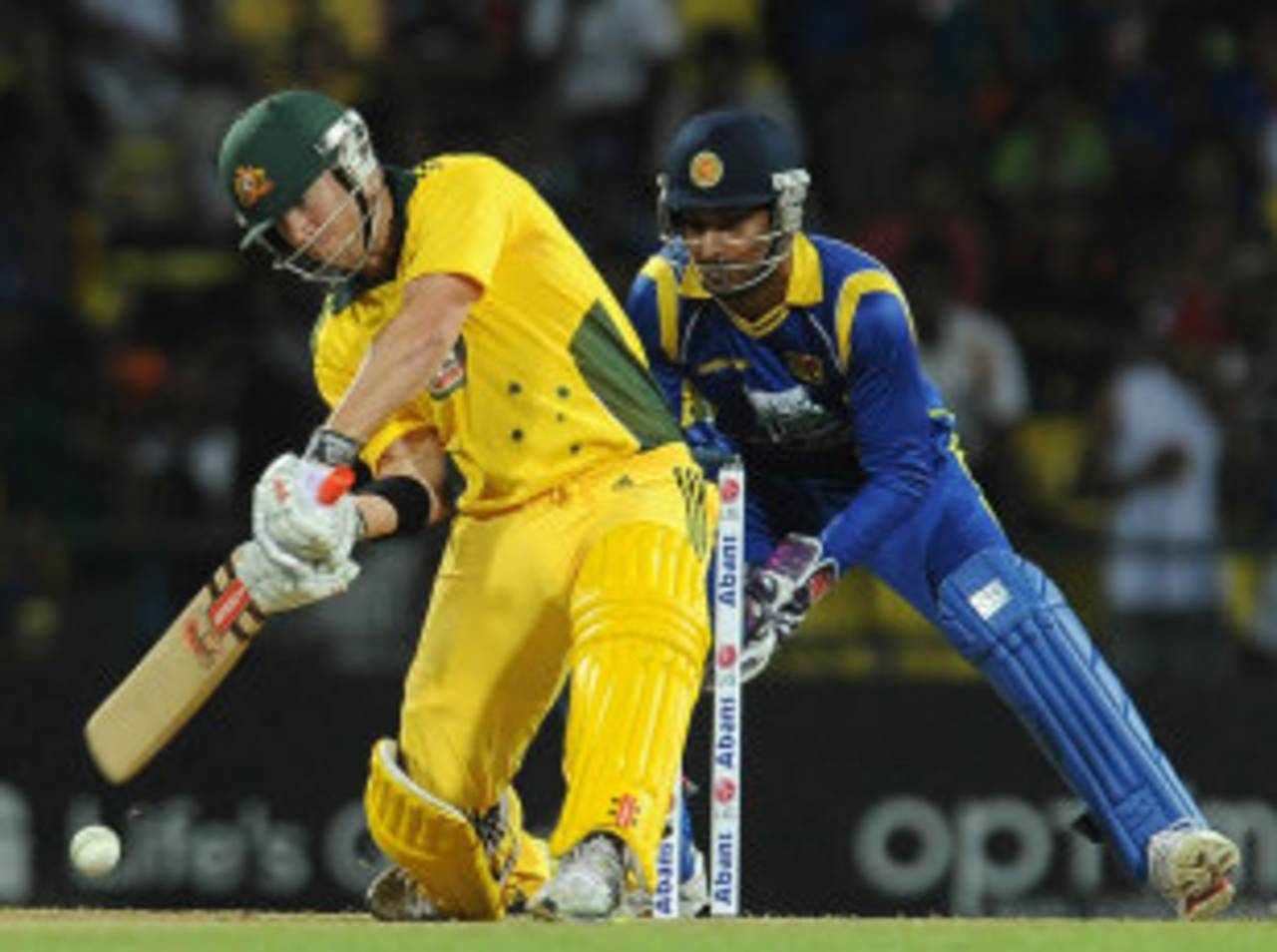David Warner's remarkable switch-hitting ability should be celebrated and not banned, according to his team-mate
David Hussey. In the third over of
Wednesday's Twenty20 against India, the left-hander Warner changed his batting stance as R Ashwin was releasing a delivery, and he muscled an enormous six with a right-handed grip over what would have been deep extra cover.
Under the laws of the game Warner's move was perfectly legal, even though a bowler must tell the umpire if he is bowling with a different hand, or switching between over and around the wicket. Similarly, a fieldsman cannot deceive the batsman by significantly changing his position as the bowler runs in.
Switch-hitting has been an issue in the past, when Kevin Pietersen mastered the stroke and said that he felt it was such a high-risk shot that bowlers were not disadvantaged. Hussey said Warner practised the shot regularly in the nets and that he could become a pioneer of the style, and there was no reason the stroke should not be allowed in Test cricket as well.
"I think it's innovative," Hussey said. "Dave is a very classy player, he can bat right-handed or left-handed. It's just a new invention of Twenty20 cricket and I think it definitely should be allowed. I think everything is snowballing from Twenty20 cricket. You see [Test] run-rates up to four or five an over now, so you never know, a switch hit in Test cricket, maybe to bring up a double-hundred in a day.
"I think you can [adapt to it]. You see in baseball there are people who bat both sides of the plate so there's no reason why you can't do it in cricket. Davey is probably a pioneer. Hopefully a few of the younger kids coming through can work at those skills."
As opposed to the reverse-sweep, which is often played with the hands still in their starting position on the handle of the bat, Warner's switch-hit involved a complete change of stance and hand position. When Ashwin ran in, Warner was a left-hand batsman, but as he released the ball, the batsman had become a right-hander.
Aside from the issues of fairness to the bowler and fielders, the move raises questions over umpiring, and whether wides and lbws should be adjudicated based on the original stance or the new position when the shot was played. They are the sort of grey areas that could frustrate Warner's opponents, and even Hussey conceded it was hard bowling to him.
"Dave does it to me in the nets all the time and it's frustrated me, so I beamed him," Hussey said. "I tried to hit him in the head and it didn't go down very well. We had a bit of a falling out for a couple of moments there."
Hussey said if he was bowling in a match and saw the batsman change position early enough, the best move would be to "aim at his toes so he can't swing and get into his arc".
